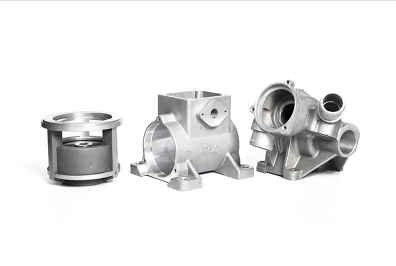Mobile:+86-311-808-126-83
Email:info@ydcastings.com
Essential Equipment for Efficient Bronze Casting in Metalworking Processes
The Art and Science of Bronze Casting Equipment
Bronze casting is a time-honored technique that combines artistry and engineering, transforming raw materials into beautiful and functional objects. At its core, bronze casting involves melting bronze alloy, pouring it into a mold, and allowing it to solidify into a desired shape. The tools and equipment used in this process significantly influence the quality of the final product. This article explores the essential bronze casting equipment, its functions, and its importance in achieving superior results.
Essential Equipment for Bronze Casting
1. Melting Furnace One of the most crucial pieces of equipment in bronze casting is the melting furnace. This furnace is designed to reach high temperatures necessary for melting bronze, which typically occurs between 900°C to 1,200°C (1,650°F to 2,200°F). There are various types of furnaces, including electric, propane, and induction furnaces. The choice of furnace depends on factors such as scale, production requirements, and budget.
2. Crucible A crucible is a container made from heat-resistant materials, often ceramic or graphite, used to hold the bronze as it melts. The crucible must withstand extreme temperatures without cracking or degrading. It is vital to select the right size and shape of the crucible to hold the desired amount of metal for casting while ensuring that it fits securely in the furnace.
3. Molds Molds are essential for shaping the molten bronze. They can be made from sand, metal, or ceramic materials. Sand molds are particularly popular due to their adaptability and ease of use; they allow for intricate designs and can be reused multiple times. Alternatively, investment casting uses precision molds made from wax or other materials that are melted away to leave a cavity for the bronze.
4. Pouring Equipment Once the bronze is molten, it needs to be poured into the mold efficiently and safely. Pouring ladles, often made from metal, are designed to transport molten bronze and must be insulated to protect the user from extreme heat. Pouring spouts and other attachment tools help direct the flow of metal into the mold, ensuring a precise and uniform filling.
bronze casting equipment

5. Cooling and Finishing Tools After the bronze has cooled and solidified, a range of finishing tools becomes necessary. This includes grinders, sanders, and polishers to refine the surface, remove imperfections, and bring out the desired finish. Additionally, tools for patination and surface treatment can be employed to enhance the artwork's aesthetic qualities.
The Importance of Quality Equipment
Investing in high-quality bronze casting equipment is essential for several reasons. High-quality tools not only improve the accuracy and appearance of the final product but also ensure safety during the casting process. Poor-quality equipment can result in defects, wastage of materials, and even accidents, making it imperative for artisans and manufacturers to choose the best tools available.
Moreover, advancements in casting technology continue to shape the industry. Innovative facilities now offer automated pouring systems, advanced heat control, and environmentally friendly materials, making the bronze casting process more efficient and sustainable.
Conclusion
Bronze casting remains a deeply respected craft that embodies both tradition and innovation. The equipment employed in this process is central to achieving high-quality outcomes, defining the work of artisans and manufacturers alike. By understanding and investing in the right bronze casting equipment, creators can unlock new possibilities in their artistic expression and craftsmanship, preserving the ancient art form for future generations. Whether you are a seasoned professional or a novice enthusiast, exploring the world of bronze casting equipment is an inspiring journey into creativity and precision.
-
Why Should You Invest in Superior Pump Castings for Your Equipment?NewsJun.09,2025
-
Unlock Performance Potential with Stainless Impellers and Aluminum End CapsNewsJun.09,2025
-
Revolutionize Your Machinery with Superior Cast Iron and Aluminum ComponentsNewsJun.09,2025
-
Revolutionize Fluid Dynamics with Premium Pump ComponentsNewsJun.09,2025
-
Optimizing Industrial Systems with Essential Valve ComponentsNewsJun.09,2025
-
Elevate Grid Efficiency with High-Precision Power CastingsNewsJun.09,2025











